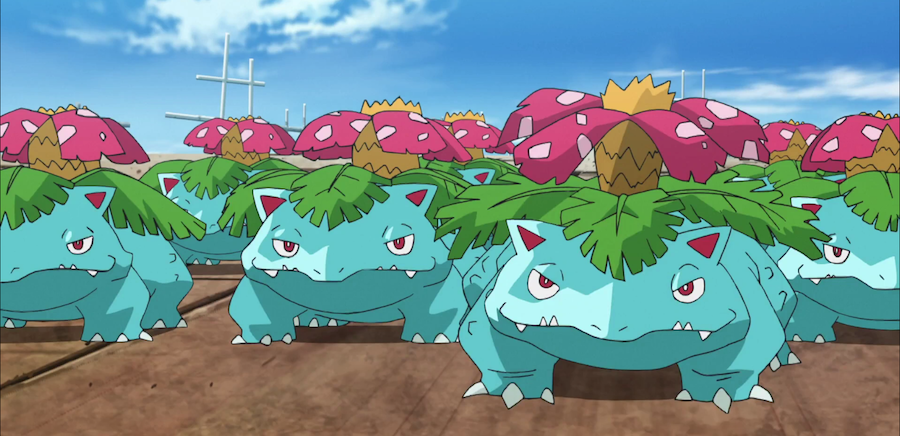When it comes to Pokémon, a rich lore for each of the individual catchable creatures has been established through official guides, games and episodes. Pokémon fans are well-versed in how different Pokémon can evolve. But some mysteries remain. This week, a surprisingly scientific analysis of Venusaur and how it might reproduce- captured the attention of Pokémon fans on Japanese X (formally Twitter), quickly reaching over 1 million views.
Venusaur is the final form of Bulbasaur. Making its debut right back in Pokémon Red, Bulbasaur is a cute and gentle half-animal, half-plant-like starter Pokémon that has a bulb on its back, which eventually blossoms into a beautiful pink flower. The flower is fully open once Bulbasaur reaches Venusaur form.
A graduate student at Fukui Prefectural University who specializes in studying plant biology recently took to X to make an observation, complete with diagram, that sheds light on how exactly Venusaurs might reproduce.
The diagram shows the male Venusaur on the left and the female on the right. Androdiecious means that a plant species has male and hermaphrodite (both male and female) flowers on separate plants. This would mean that female Venusaurs could reproduce either by themselves or with pollen from a male or another female Venusaur.
The post received many positive comments praising both the original post as well as the Pokémon series’ designs. Others weighed in on the scientific discussion, pointing out that the fact that male Venusaurs outnumber female Venusaurs 7:1 in the Pokémon universe adds support to the theory.


In response to the comments, the original poster Taiki Kobayashi said he never expected the post to gain so much attention and emphasized that this was an unofficial observation on the Pokémon. For those who are interested in his research into plant sex determination, the academic papers can be found here.
Post translation: I never thought this post would grow so much.
I’ll just do a little promotion.
I’m currently in graduate school researching the flower called White Campion (Silene latifolia), which is dioecious (it has separate male and female plants).
If you are interested, please Google “Silene latifolia sex determination.”
Venusaur’s design was probably never meant to come under this level of scrutiny, and the plant parts on its flowers were probably chosen for their appearance. Still, it is fun to analyze Pokémon as if they were real life creatures.





